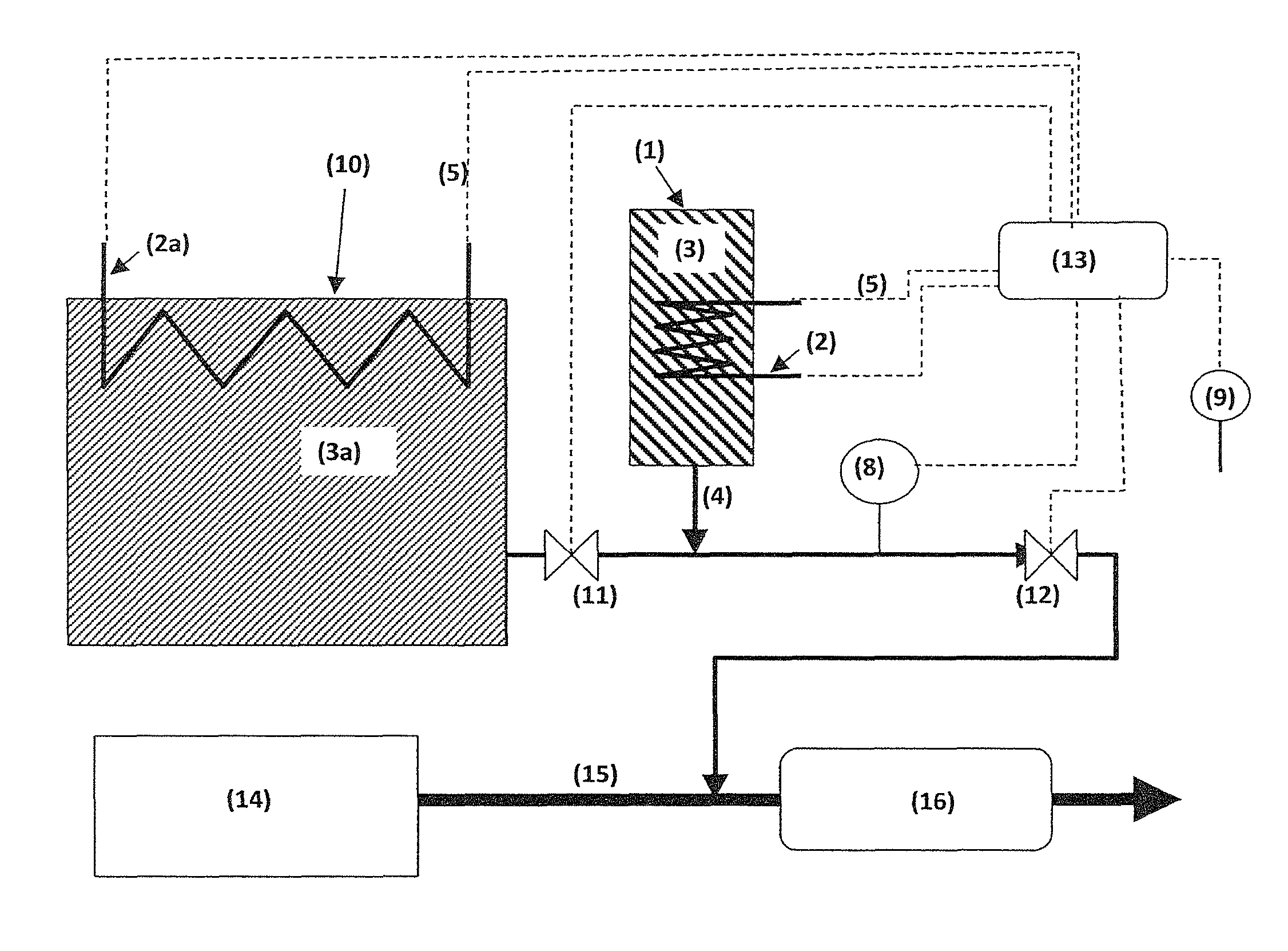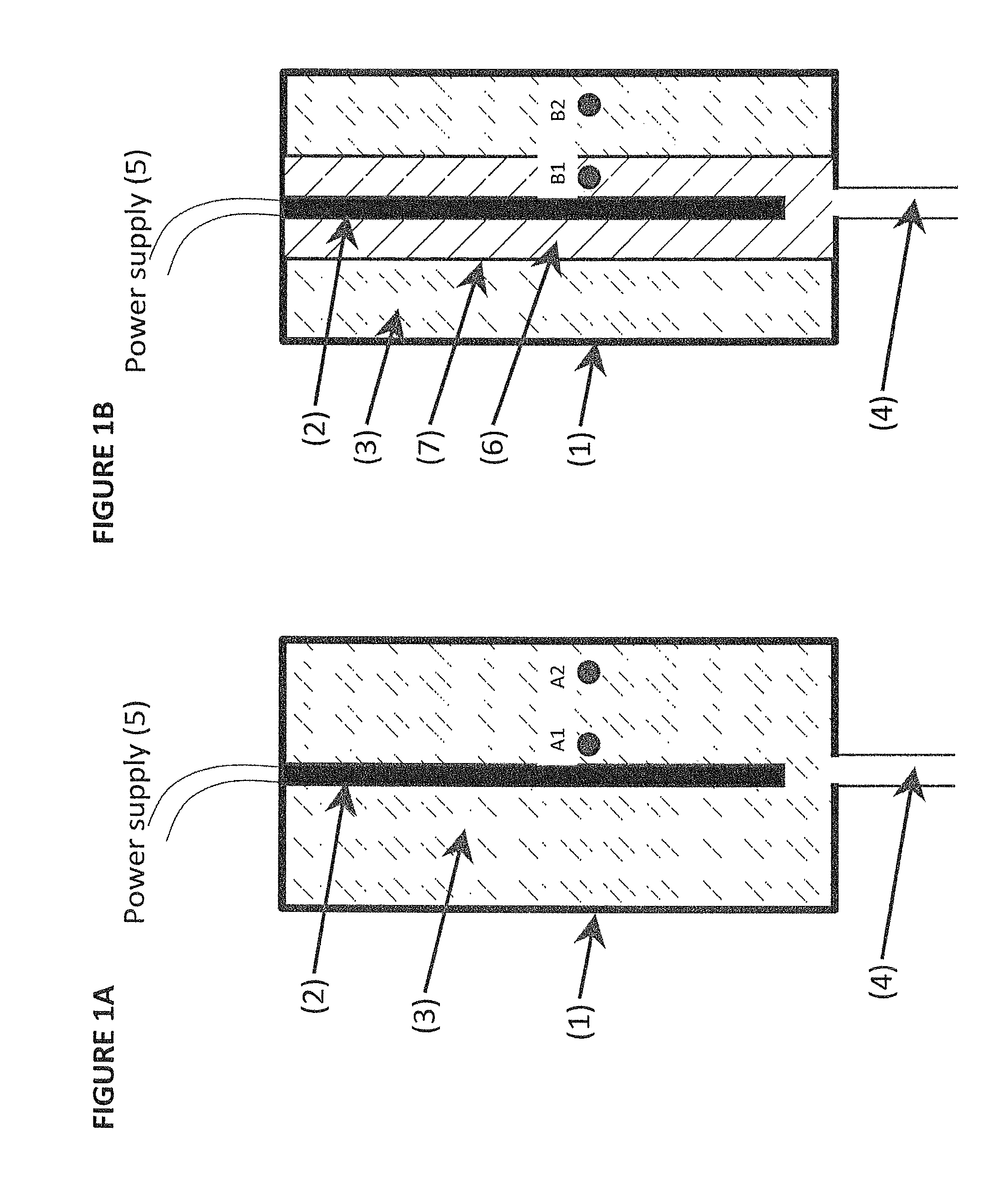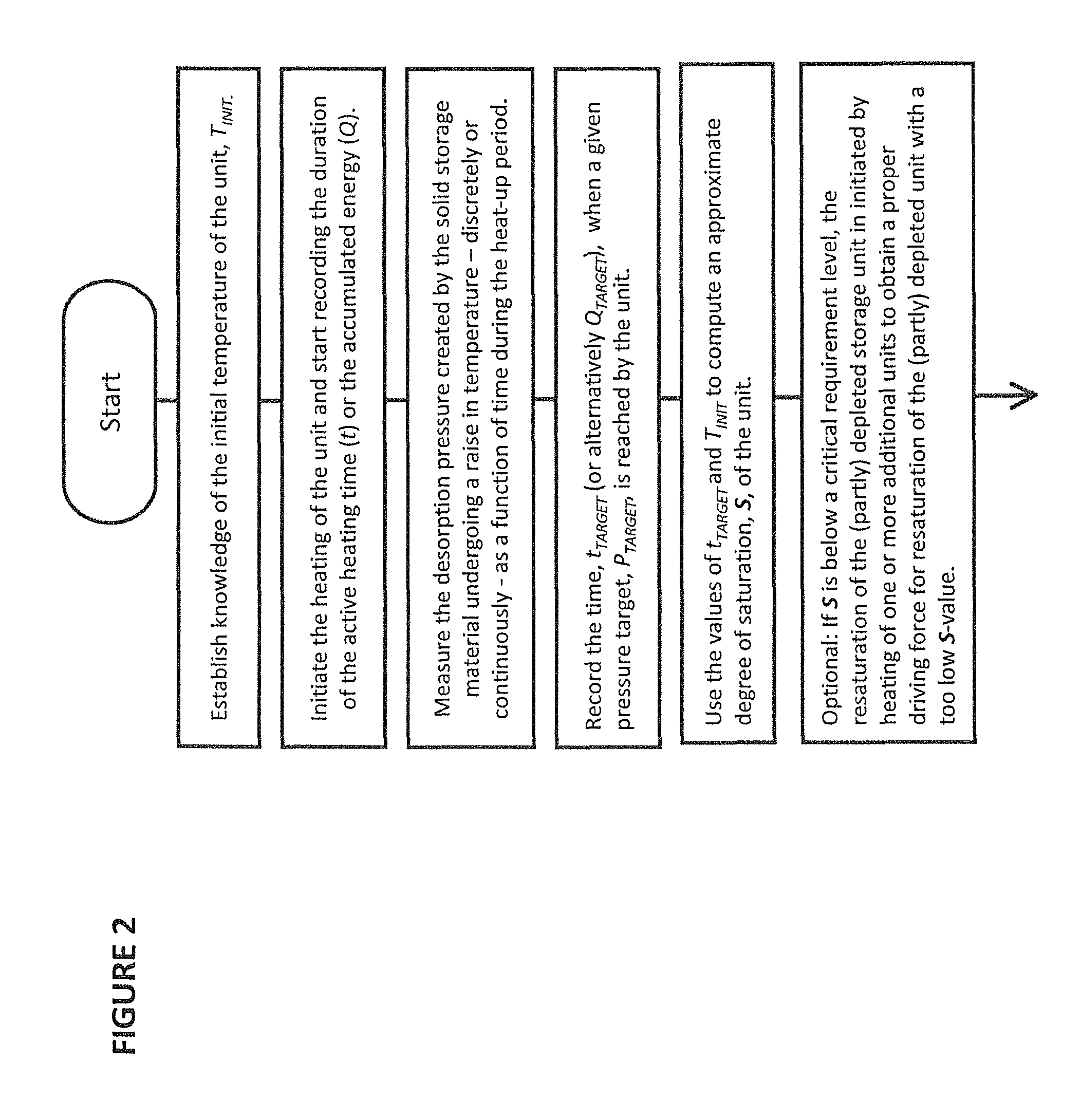Method for determining the degree of saturation of solid ammonia storage materials in containers
a technology for solid ammonia storage materials and containers, applied in the directions of ammonia handling/storage, inorganic chemistry, exhaust treatment, etc., can solve the problems of difficult to achieve under driving conditions, inconvenient and indirect methods for mobile ammonia storage in containers, and too hazardous ammonia storage in the form of pressurized liquid in containers, etc., to reduce power consumption during operation, improve resaturation, and improve resaturation
- Summary
- Abstract
- Description
- Claims
- Application Information
AI Technical Summary
Benefits of technology
Problems solved by technology
Method used
Image
Examples
Embodiment Construction
[0037]FIG. 1A shows an example of a device where the present inventions is can be applied. A storage container 1, which can be made of e.g. steel or aluminum, contains a heating element 2 inside the storage material 3 and the container has an exit tube 4 that allows ammonia to flow out during desorption by heating and it also allows for providing a pressure of ammonia from a different source, e.g. a larger storage container 10 (FIG. 6) to resaturate the storage material. The heater can be an electrical heater that has a power supply 5. The pressure measurement is done with a pressure sensor 8 (shown on FIG. 6) that is connected to the tube 4.
[0038]FIG. 1B shows the same unit but here the storage material is partly degassed after some of the ammonia has been desorbed by heating of the unit. The degassed part 6 is typically present closest to the heating source and the saturated material 3 is further away from the heating source. The line 7 illustrates a front where the material is fu...
PUM
| Property | Measurement | Unit |
|---|---|---|
| pressure | aaaaa | aaaaa |
| absolute pressure | aaaaa | aaaaa |
| pressure | aaaaa | aaaaa |
Abstract
Description
Claims
Application Information
 Login to View More
Login to View More - R&D
- Intellectual Property
- Life Sciences
- Materials
- Tech Scout
- Unparalleled Data Quality
- Higher Quality Content
- 60% Fewer Hallucinations
Browse by: Latest US Patents, China's latest patents, Technical Efficacy Thesaurus, Application Domain, Technology Topic, Popular Technical Reports.
© 2025 PatSnap. All rights reserved.Legal|Privacy policy|Modern Slavery Act Transparency Statement|Sitemap|About US| Contact US: help@patsnap.com



